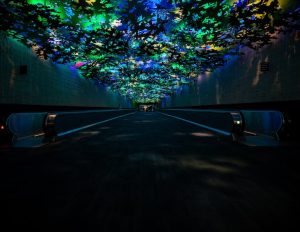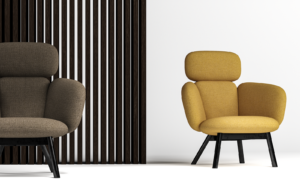GTHD
Part 27:
Top 5 essential tips for procuring a client’s decorative lighting
We’re given five top tips for buyers to navigate and accomplish a successful project, with the help from Adnan Bennani who heads up the contract team at Moroccan Bazaar, manufacturers of Moroccan decorative lighting for the Four Seasons Group and SBE’s Mondrian Doha, among many others.

Credit: Moritz Waldemeyer
Preamble. Decorative lighting is our side of the partnership. Interior designers reach out to us early from concept development stages to final weeks of delivery when in cases things have gone wrong with their current supplier; they need a fast solution.
Things don’t always go to plan, managing the complex process from researching products, costing them, pitching them and assessing whether your client loves or hates them, is a lengthy and time-consuming progression. But nevertheless expected. Only when you find out the lights now part of your scheme is not fit for purpose. Nightmare. However, the risk can be greatly reduced. But how?
A lot can be learnt from experience. So here is mine. Having worked on projects from everything from a residential apartment in London to multi-production runs for global hotel groups, here are my five essential tips for executing the successful lighting component of your project.
Understand the nature of the end use of the lighting within the project
Ensuring that lighting is suitable and effective for the environment comes down to a balance of what the client’s overall hopes and ambitions are and tempering and amplifying this vision and making it tangible with your own developed, professional sense of what works.
It seems obvious but it is fundamental and essential. If it’s better to understand your client and their expectations as early as possible. The later, the more drawn out and potentially painful. Depending on the scope of the lighting required and its place on the project, getting clarity from a client on what purposes and ambitions the light will deliver can often be the most crucial factor. I suspect it is important or why else would you be reading this article.
Often it requires back and forth but will really be the foundation upon which success is built.
Authenticity of product and its provenance
Subjective, indeed. Balancing a budget, deadlines, internal and external partners communications are all part of the intricate details that make up the grand vision of the job. The subjective nature of taste is why a client requires a designer and the lighting has a place within the overall plan. We understand that and know our place within it.
Our experience, especially as we work with hand crafted products with an allure, any quality products made by an artisan have such an impact on the finish feel of a space. Lighting with a soul or furniture for any matter, where you a client sees the detail and effort gone into producing them, will illuminate not only the room but your contribution to the project.
With our lighting, a client will pay for a decorative lamp, but free of charge will benefit from a spectacular ceiling feature of cast shadows. Sometimes more important than the functional lighting application. These are significant details for our clients. What’s significant to yours?
Ask your lighting company about the products: who made them and how they’re made, any unseen benefits and interesting stories. People crave authenticity. Providing them this gives a connection to the project and invests them into it being a success. It’s your job to take them through this process, unscathed.
Getting the first-choice lights, without using all the budget
Have you spoken to the manufacturer? You might be surprised to find your lighting supplier can engineer a product within reason to fit into a workable budget. Often picking lighting comes from a catalogue of preset sizes, gauges of material and components, but with a contract enquiry can be adapted to fit your project. It won’t hurt to ask but can be very rewarding if you do. always want the best but clients don’t necessarily want to pay for the best. Have that discussion with suppliers to see how they can work around budgets restraints.
Are we going to meet the deadline?
Each company and product have its own requirements and most notable in time taken to manufacturer it. To ensure you deliver on time and stick to your procurement schedule, take into account nature of product. For example, part of the exquisite charm of our handcrafted artisan lighting range is they can take four to 12 weeks, depending on the light usually longer than industrial or more modern approaches.
This may be stating the obvious, but then make this part of the agreement with the supplier and stay in regular contact to keep tabs on manufacturing progress. Once in a blue moon something goes astray but it can be easily navigated if you stay in regular contact.
Want to know if they are capable of delivering?
Ask their view on the project and ask them to be honest. Here you get to judge their honesty and hear their technical understanding of delivering the lights you want. This phone call can take 30 minutes but will be the best time spent in the entirety of your lighting specification.
To conclude:
Communication is key. By far the most important aspect of project management and the running theme here. Be open about what are the most important factors to your client – the rest can be navigated, but securing the most important gives enough room to breathe and maneuver.
Moroccan Bazaar is a third generation manufacturer of Moroccan and orientalist decorative lighting and furniture for contract hospitality and residential projects. There are many talented craftsmen in Morocco that can produce interior lighting and case goods but there are few who offer our capacity of output and amount of expertise and experience to deliver projects of scale under one roof. Our vision is to put Moroccan goods on the map for contract projects.





